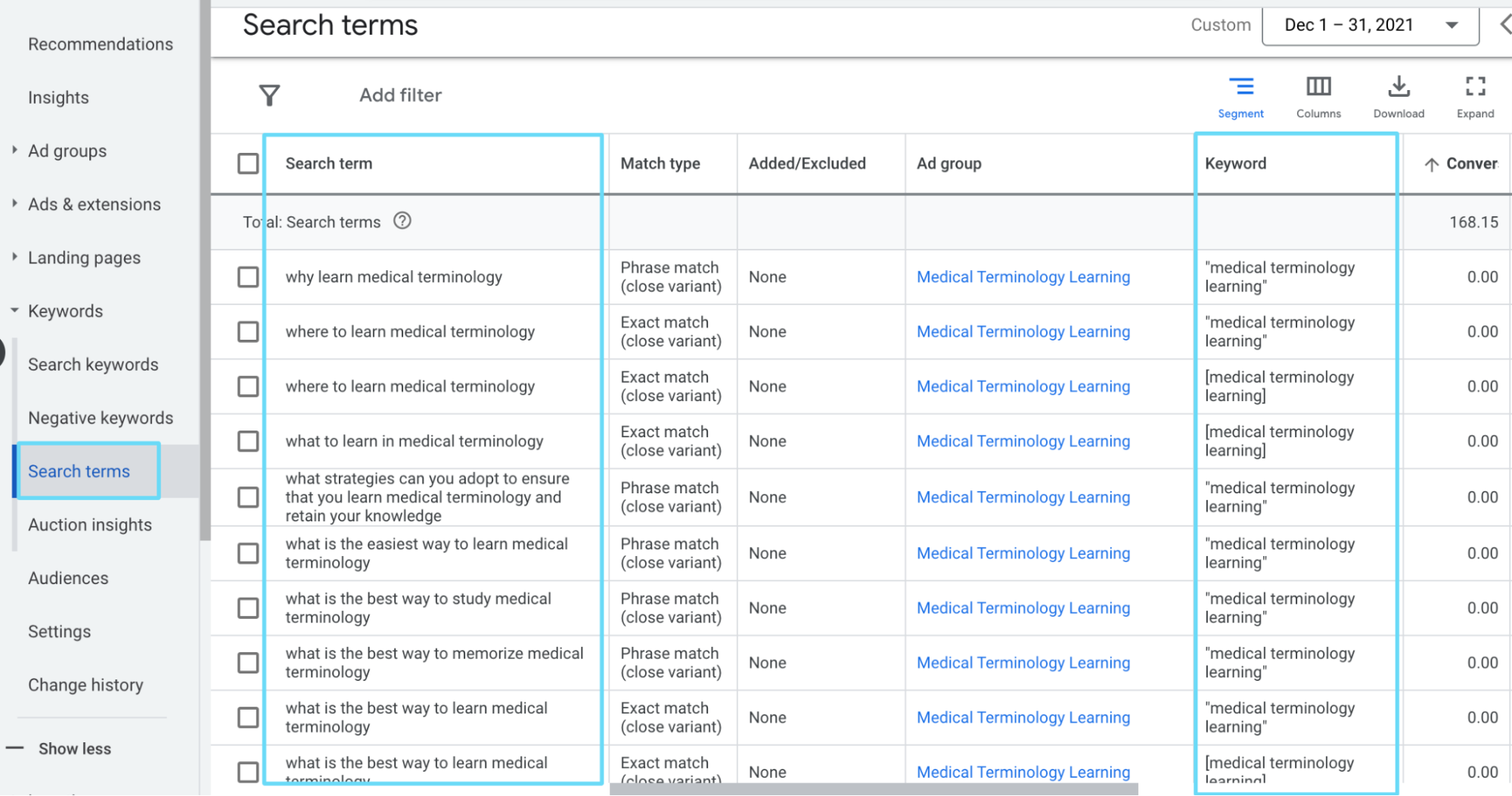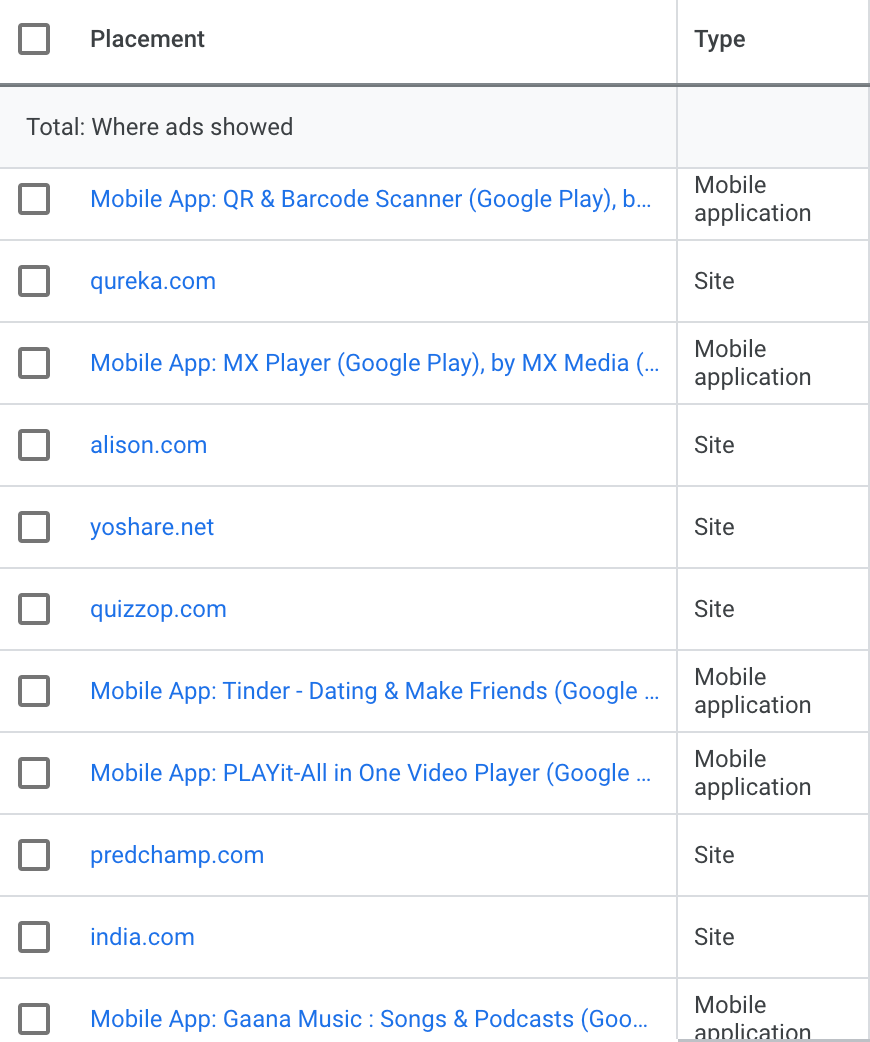What does it take to build a Google Ads campaign that converts? Compelling copy? Intriguing images? A clear CTA?
Yes, yes, and yes—but these alone aren't enough.
You need the right keyword targeting to get the right eyes on your ads. Otherwise, what's the point of all the clicks if no one's converting?
If you're not careful with your keyword targeting, you could end up with the Iceberg Effect, dragging your ad strategy down.
Let's review exactly what that is and how to prevent it from taking your campaigns under.
Get brand new Google ad strategies straight to your inbox every week. 23,739 people already are!
The Iceberg Effect is when the keywords you see (on the surface) of your PPC accounts don't match the search terms (beneath the surface) your ads appear for.
What's on the surface, you can control.
But what's beneath? Not so much.
So when this ratio is askew, your Google Ads Search network campaign will look something like this:

Why is this a bad thing?
For one, you’re really paying for search terms instead of your target keywords. And if those search terms don't match your keywords, then you're attracting the wrong traffic, which ultimately hurts conversions and your level of control.
In your Google Ads search terms report, you'll find a table showing your keywords, search terms, and match type (this matters, but more on that later).

Like in the screenshot above, when you have the Iceberg Effect, you'll notice that although you have one or two target keywords in your list, you'll have a dozen different search terms—some that don't relate to your target audience.
If the search intent isn't matching prospective customers, then they won't click. And even if they do, it won't land a conversion.
As another example, let’s say your keyword is “project management software.” The search terms (and intents) may be
- project management software monday (looking specifically for the Monday.com tool)
- project management software free (searching for free PM tools)
- project management software comparison (needs help finding the right PM tool)
- project management software for construction (works in the construction business and needs PM tools)
- project management software for small businesses (SMB owners looking for PM tools)
If you're selling project management software to Fintech enterprises, then none of these will lead to conversions.
Why?
Not a single one matches your key phrase specifically. In fact, it may look something like this...

So the goal?
Get your keyword to search terms ratio as close to 1:1 as possible, or risk wasting hundreds or even thousands of dollars per month on irrelevant, non-converting search terms.
Now, the size of your "icebergs" will vary depending on the keyword match types that live beneath the surface:
- “Exact Match” = Smallest iceberg
- “Phrase Match” = Bigger iceberg
- “Broad Match” = Biggest iceberg
The broad modified match type (identified by plus signs in front of each word, like +project +management) used to be an option, but it's no longer available (as of July 2021). To get caught up, check out our in-depth guide explaining keyword match types.
In a nutshell, the closer you are to an exact match, the thinner the iceberg, the more targeted your audience, and the higher conversion potential. The broader the match, the bigger the iceberg, the wider your audience and impressions, but the lower your conversion potential.
The Iceberg Effect doesn't discriminate. It can happen in any of your Google Ads mediums, including Display, YouTube, and Search.
Here's an overview of how it can impact your campaigns.
Google Display Ad campaigns have tools and options to add multiple targeting layers to define your audience. The notion here is simple: The pickier you are, the thinner your pickings.

In advertising, this is a good thing. As you can see from the screenshot above, the expansiveness of your placements can easily overpower the original intent of your targeting. So smaller, direct audiences drive sustainable growth (while reducing ad spend).
How is this possible?
By clearly defining your target audience and weeding out the rest. Google Ads allows you to do this by zoning in on
- placements
- contextual
- interests
- topics
- demographics
- geographics
- language
So the pickier your display campaigns, the more level your automatic placements (below the surface) and predetermined targets (above the surface) will be. This also helps balance your ad spend to revenue ratio, so you're getting a better return on investment (ROI).
YouTube ad campaigns work in the same way—being selective about your audience and placements is simply good for business. With better targeting, viewers are less likely to skip or ignore your video ads.
When it comes to video campaigns, in addition to video placements across the web and apps, you can also control which YouTube channels, videos, and video lineups your ads show on. This can be useful in fine-tuning your targeting to a more interested audience.
Someone who’s watching a video about fishing techniques, for example, may be less likely to be interested (at the time) in an ad about product management software. Even if they are interested in project management software, their mind’s simply not there when they’re learning how to bait trout out of hidey-holes.
So, keeping an eye on your placements and making them tighter with placement exclusions and inclusions (instead of letting them run rampant) will also help prevent the Iceberg Effect from taking over your YouTube campaigns.
The Iceberg Effect is the negative impact of advertisers everywhere not breaking things down into simpler terms.
But regardless of which Google Ads medium you use (Search, Display, Video, etc.), there will always be other universal icebergs to consider.
These universal icebergs include
- Geography: This is where visitors are located. Each city and state in the U.S. performs differently.
- Device: The devices visitors use perform differently regarding conversion rates and cost per conversion.
- Day of week: In some industries, Tuesdays might perform better than Fridays, so it varies.
- Hour of the day: Certain hours convert better than others (again, this depends on your industry and audience).
Also, changes in conversion rates (from conversion optimization tests) impact the predetermined bidding rules you set for the universal icebergs above.
If you increase conversion rates on your landing pages, it'll positively impact your universal iceberg bidding rules, and potentially uncover opportunities to improve campaigns.
Keeping large icebergs at bay isn’t rocket science. All you need to do is reduce the size of what's happening beneath the surface to create a balance.
This means making smaller ad groups with smaller targeting criteria by using the four best practices we'll outline below.
Shrinking your icebergs and gaining control over PPC accounts doesn’t have to be complicated. The goal is to decrease your search terms to keywords ratio as well as your automatic placements to targeting discrepancy.
To do this, start by generating Single Keyword Ad Groups (SKAGs) and create individual ad groups for each keyword.
The more granular, the better.
This brings search term to keyword ratios closer to 1:1 and ultimately helps to eliminate large icebergs in ad groups.
Not only do you get more control beneath the surface, but it also improves your click-through rates, quality scores, cost-per-clicks, and cost per conversions because your ads are more relevant to your keywords.
Keyword selection seems simple...until it's not.
Some appear to be high-potential keywords, then turn out to be nothing more than budget killers. So, monitor your search terms and weed out those that are bringing in low-converting audiences by adding them to your negative keyword list.
As you're experimenting with audiences, you'll find that some audiences and placements outperform others. When this happens, it’s a good opportunity to look at the audiences and placements that perform the worst. Keep an eye out for any that don’t convert but spend money, or those that get unreasonably higher CPAs, and then exclude them.
And be careful; some conversions happen offline. To see which audiences or placements are responsible for offline conversions, you can set up offline conversions tracking to prevent excluding seemingly non-converting targeting.
Excluding audiences and placements is excellent for creating smaller, higher-converting campaigns.
We get it. It's tempting to target all locations, times, and devices in your ad campaigns.
But having too broad of an ad schedule, location, or device targeting will water down your results.
Before you know it, you’re experiencing the Iceberg Effect.
Instead, stay granular with your structural and exclusion approach. Consistently trim these areas to prevent wasted dollars on low-performing campaigns.
One option is to reduce the number of targeted locations and time zones. Unless you're a local business, it's challenging to know where to zone in geographically. So, monitor where exactly traffic comes from and cut out the non-converting locations.
Do the same with devices and ad placement times through effective dayparting (this is when your ad placements occur at specific times of the day, based on past results).
Then, implement bid adjustments to ensure your ad spend increases and decreases when necessary. For example, if smartphones have a higher conversion rate than desktop, then setting up bid adjustments lets Google know to invest more of your ad dollars there.
In short?
Yes.
Negative keywords, SKAGs, exclusions, and trimming do work. Not only do they improve campaigns, but they also help businesses across industries see better results.
Take, for example, MyStudentsProgress, Inc. (MSP), a leader in private school information management software. It had Google Ad campaigns running, but no time or resources to focus on PPC lead acquisition internally.
This led to an expensive, slow burn with high costs and stagnant lead generation.
We came in specifically focused on melting MSP’s iceberg. After two months of implementing SKAGs, custom landing pages, and heatmaps, MSP saw leads quadruple and CPL (cost per lead) reduce by 50%.
We saw similar results with The Clearing, a residential treatment center. This time, it was a highly-competitive industry with high CPCs. Growing non-branded conversions and converting high-cost, high-intent traffic was challenging.
But not for us.
After a few months of restructuring and implementing geo-targeted campaigns, they saw a 163% increase in high-quality lead conversions.
Your Google Ads campaigns are only as good as your ability to spot low-performing ad groups. Using the tips in this guide, you can prevent pesky icebergs from weighing down your campaigns.
So experiment with your ads to see what works, and trim away what doesn't.
Whatever you do, just don't let multi-intent keywords fool you.
You can learn all about that and more in our next guide on the power of keyword intent.
